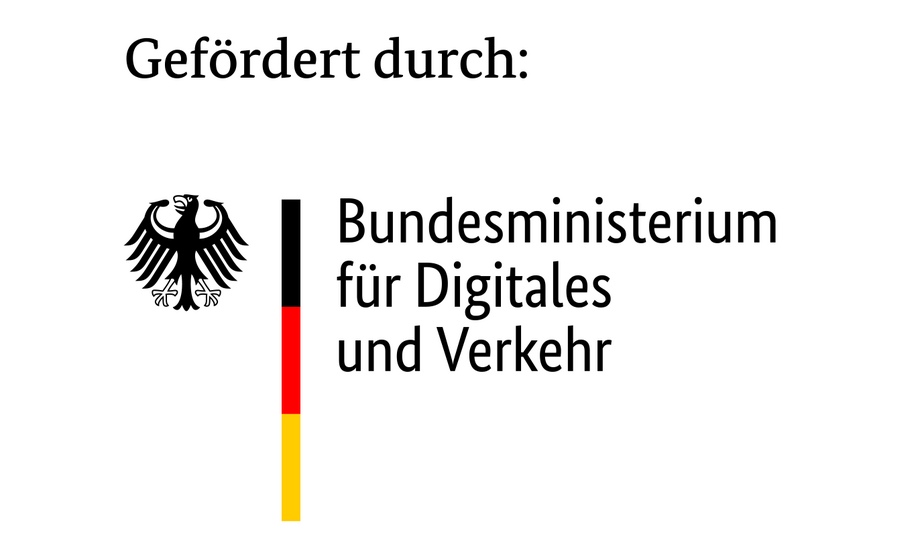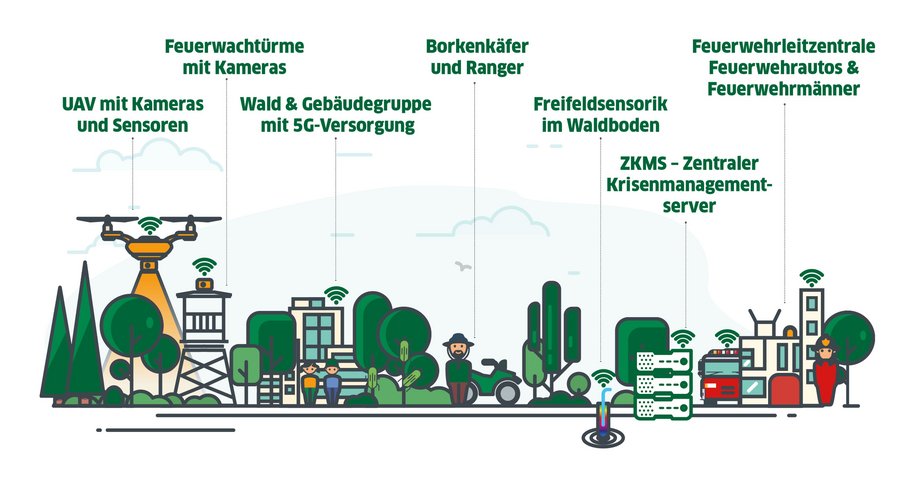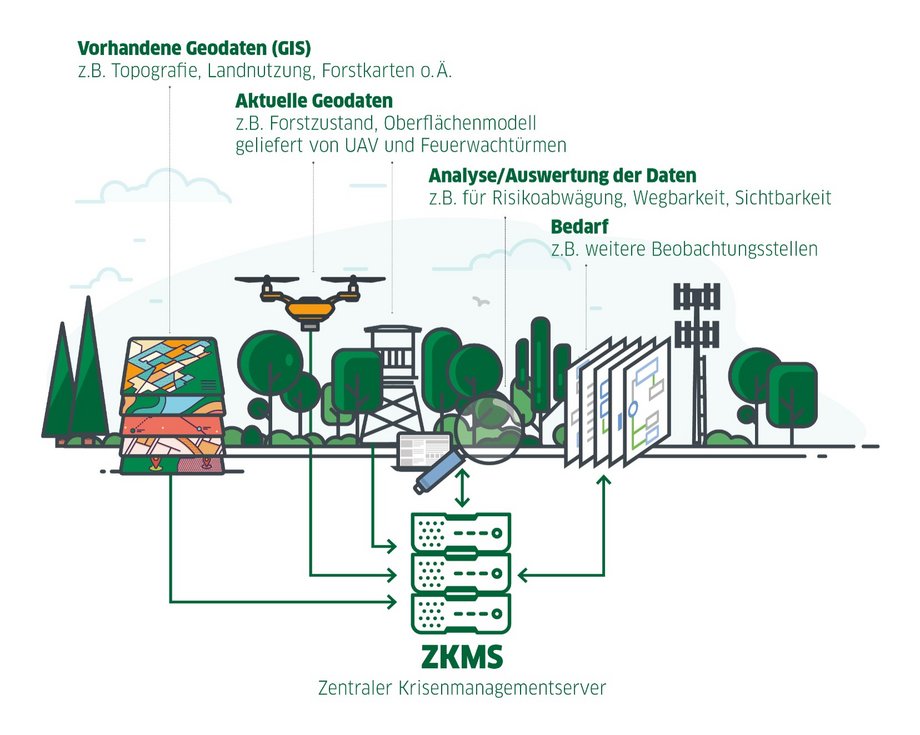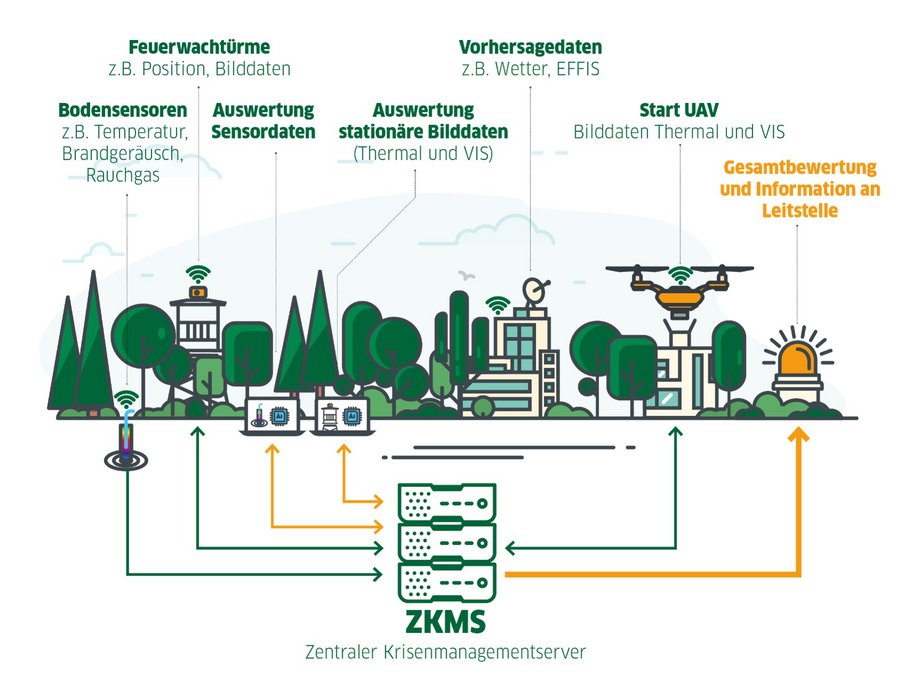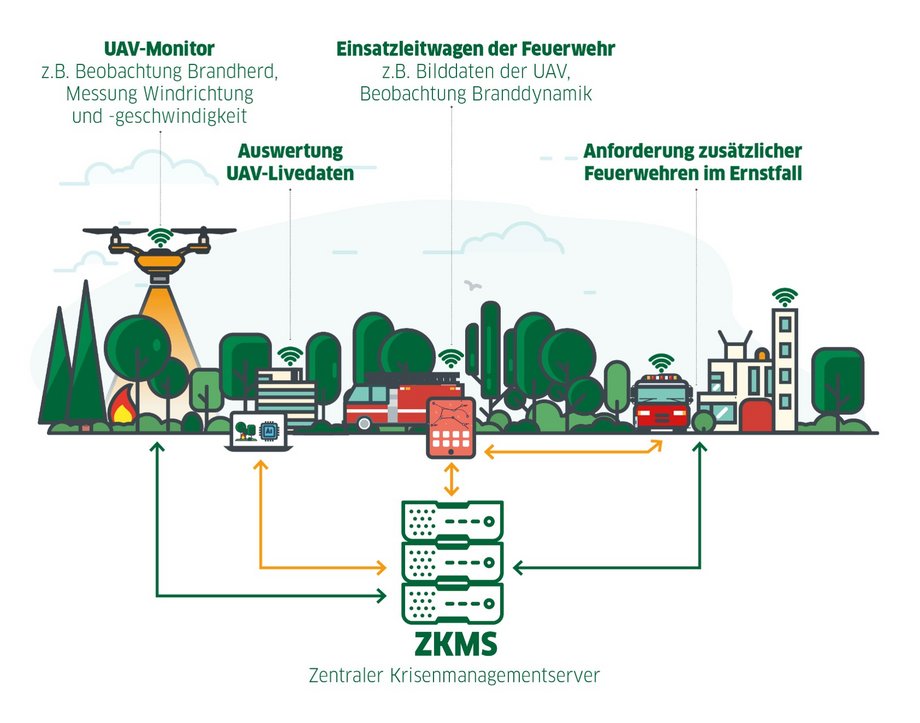5G-Waldwächter (5G Forest Guard)
In this project, a 5G infrastructure will be created that will significantly support the fight against and prevention of forest fires. With appropriate sensor technology and by using drones, the relevant data will be gathered in a central crisis management server.
The 5G Forest Guard project is intended to effectively improve the crisis management of forest fires on 3 levels.
Level 1: Crisis Preparedness
At this level, all existing data and information need to be collected. If necessary, the data sets are converted into processable formats and integrated into a central geodata server. The result is an inventory of the forest. In terms of early detection of a possible bark beetle infestation, the red edge method and gas sensors are used. The project area is systematically overflown by drones that transmit their data to the server via 5G. Furthermore, the project aims to develop gas sensors also for networked ground sensing and to validate their possible applications for forest fire control. The result of this level will be a data-based assessment of fire risk and hazard potential.
Level 2: Crisis Warning
Regular monitoring is part of the warning system being developed in the project. In combination with the historical weather data, the forecast and possible additional hazards, a classification into risk levels is possible. This is closely monitored by additional sensor levels. At this point, thanks to intelligent networks and data infrastructure, measurement data is automatically evaluated using AI algorithms. The goal is to automatically provide a valid foundation for making decisions about triggering a crisis warning or an alarm.
Level 3: Crisis Management
In this level, the management of the crisis begins. Thanks to the new data situation, the fire department groups can be maneuvered to the source of the fire in a targeted manner. All information is gathered on a server. An optimized access route is planned using the data and basic information collected in the early warning phase. Data from the other early warning stations is also processed and made available to the fire department.
